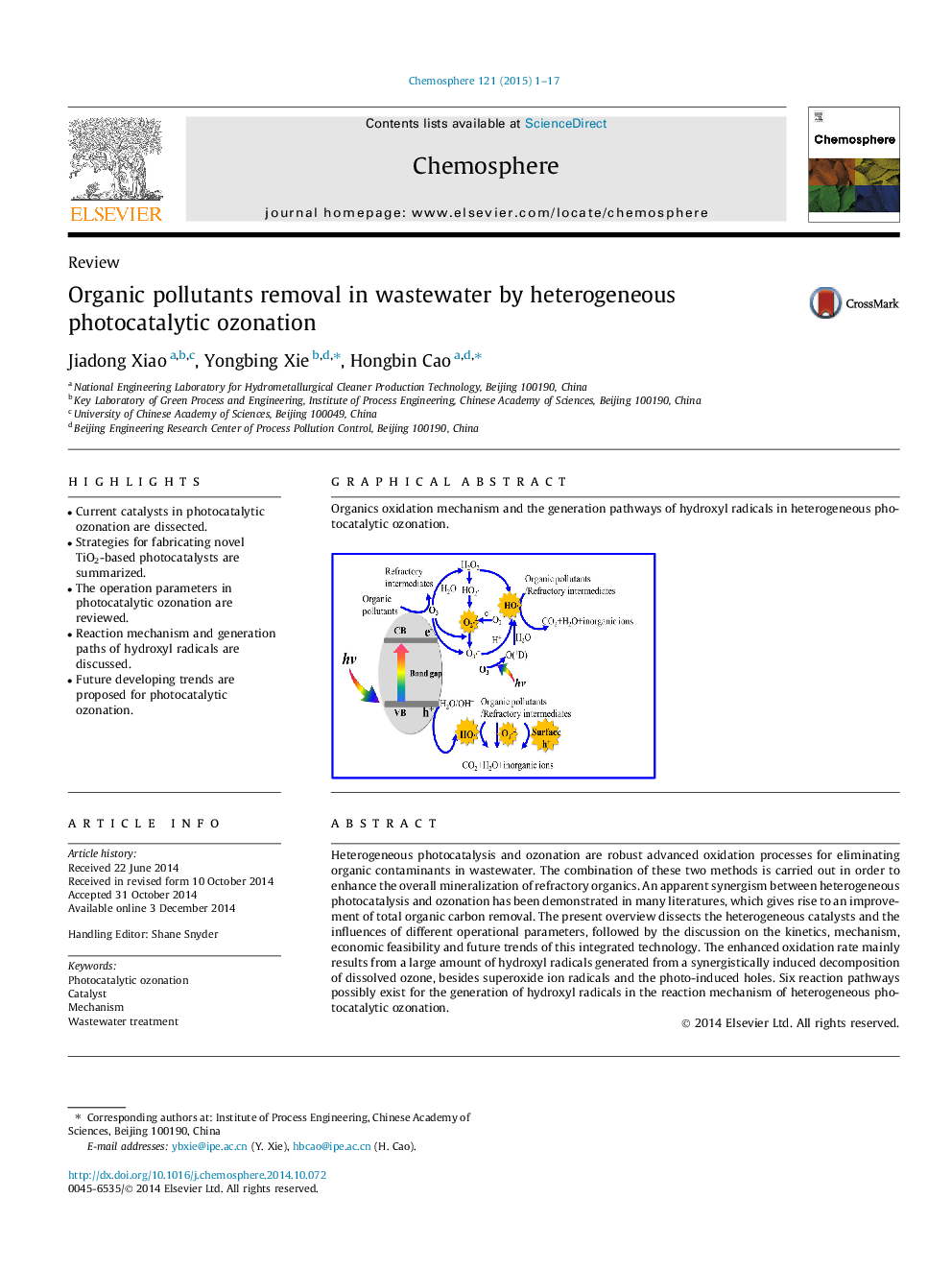| کد مقاله | کد نشریه | سال انتشار | مقاله انگلیسی | نسخه تمام متن |
|---|---|---|---|---|
| 4408556 | 1618850 | 2015 | 17 صفحه PDF | دانلود رایگان |
• Current catalysts in photocatalytic ozonation are dissected.
• Strategies for fabricating novel TiO2-based photocatalysts are summarized.
• The operation parameters in photocatalytic ozonation are reviewed.
• Reaction mechanism and generation paths of hydroxyl radicals are discussed.
• Future developing trends are proposed for photocatalytic ozonation.
Heterogeneous photocatalysis and ozonation are robust advanced oxidation processes for eliminating organic contaminants in wastewater. The combination of these two methods is carried out in order to enhance the overall mineralization of refractory organics. An apparent synergism between heterogeneous photocatalysis and ozonation has been demonstrated in many literatures, which gives rise to an improvement of total organic carbon removal. The present overview dissects the heterogeneous catalysts and the influences of different operational parameters, followed by the discussion on the kinetics, mechanism, economic feasibility and future trends of this integrated technology. The enhanced oxidation rate mainly results from a large amount of hydroxyl radicals generated from a synergistically induced decomposition of dissolved ozone, besides superoxide ion radicals and the photo-induced holes. Six reaction pathways possibly exist for the generation of hydroxyl radicals in the reaction mechanism of heterogeneous photocatalytic ozonation.
Organics oxidation mechanism and the generation pathways of hydroxyl radicals in heterogeneous photocatalytic ozonation.Figure optionsDownload as PowerPoint slide
Journal: Chemosphere - Volume 121, February 2015, Pages 1–17
